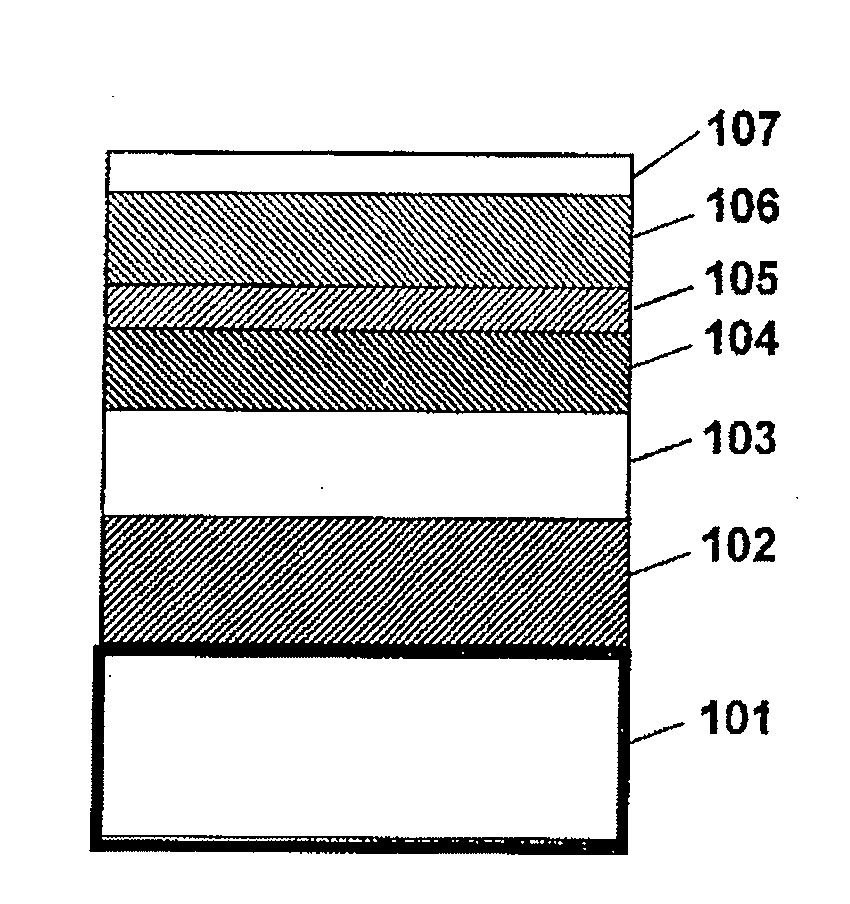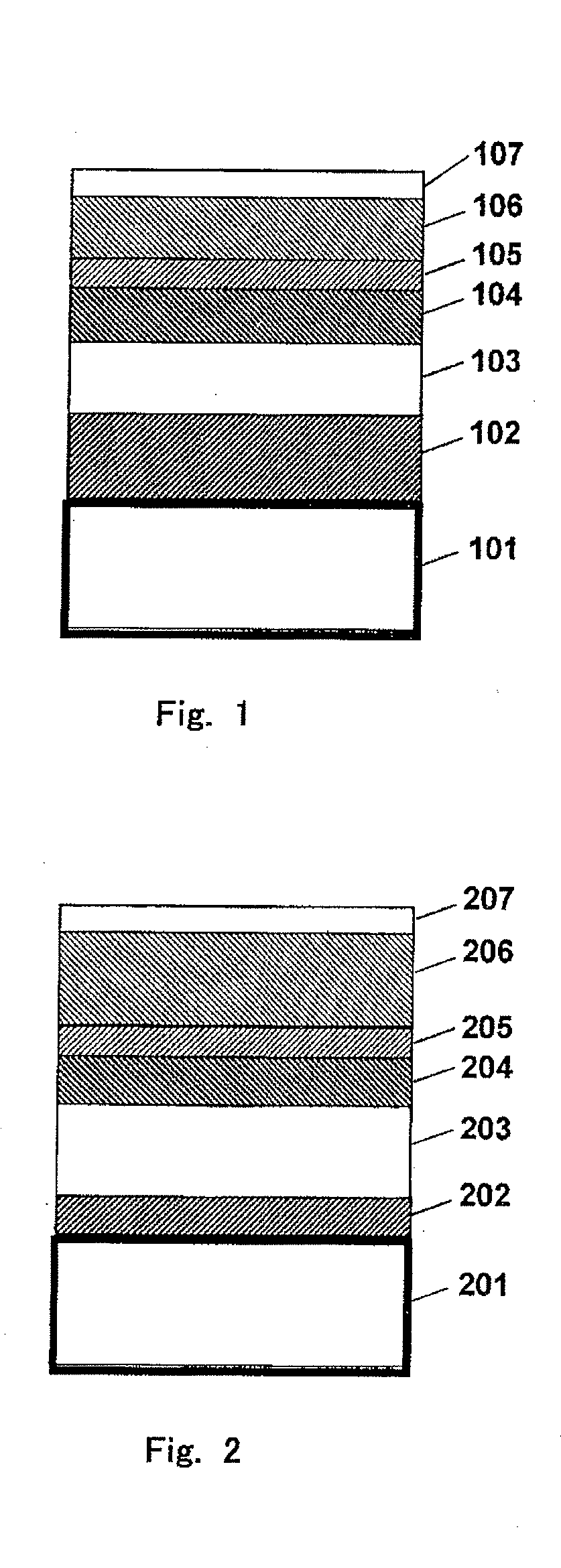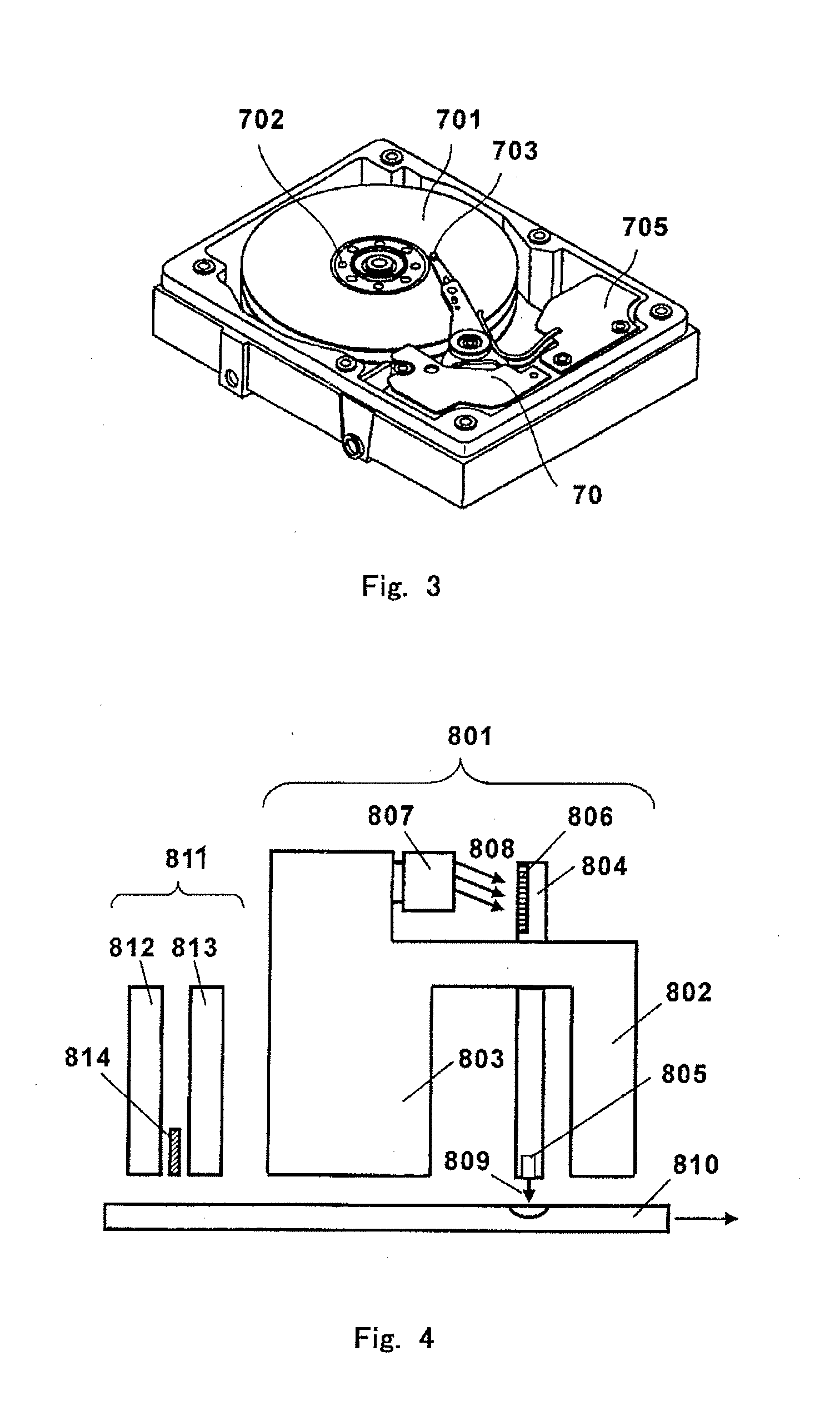Thermally assisted magnetic recording medium and magnetic storage device
a magnetic recording medium and magnetic storage technology, applied in the field of magnetic recording medium and magnetic storage device, can solve the problems of inviting a great increase in coercive force dispersion, and achieve the effects of minimizing coercive force dispersion, weak exchange coupling, and reducing the dispersion of diameter
- Summary
- Abstract
- Description
- Claims
- Application Information
AI Technical Summary
Benefits of technology
Problems solved by technology
Method used
Image
Examples
examples
[0083]The present invention will now be specifically described by the following examples. The examples should not limit the scope of the invention. The invention can also be practiced in accordance with embodiments modified from the examples within the scope of the invention.
examples 1-1 to 1-14
, and Comparative Example 1
[0084]Thermally assisted magnetic recording mediums having a multilayer structure as illustrated in FIG. 1 were manufactured as follows.
[0085]A Ni-50 atomic % Ti alloy underlayer (102) having a thickness of 30 nm was formed on a heat-resistant glass substrate (101). Then a soft magnetic underlayer (103) having a thickness of 25 nm comprised of Co-20 atomic % Ta-5 atomic % B alloy was formed on the Ni—Ti alloy underlayer-formed substrate. Then the soft magnetic underlayer-formed substrate was heated to 250° C., and a Cr layer (104) having a thickness of 10 nm was formed thereon. Then an underlayer (105) predominantly comprised of MgO and having a thickness of 5 nm was formed, and then the substrate was heated to 420° C. Thereafter, (Fe-55 atomic % Pt)-18 mol % TiO2 magnetic layer (106) having a thickness of 6 nm and then a carbon protective overcoat (107) having a thickness of 3 nm were formed in this order.
[0086]As the underlayer (104) predominantly compri...
examples 2-1 to 2-8
[0109]Thermally assisted magnetic recording mediums having a multilayer structure as illustrated in FIG. 2 were manufactured as follows.
[0110]A Ni-50 atomic % Ta alloy seed layer (202) having a thickness of 10 nm was formed on a heat-resistant glass substrate (201). Then a soft magnetic underlayer (203) having a thickness of 50 nm, comprised of Co-28 atomic % Fe-5 atomic % Zr-3 atomic % Ta alloy, was formed on the Ni—Ta alloy seed layer-formed substrate. Then a Ta underlayer (204) having a thickness of 7 nm was formed thereon. Thereafter an underlayer (205) predominantly comprised of MgO and having a thickness of 3 nm was formed, and then the substrate was heated to 450° C. Thereafter (Fe-50 atomic % Pt-10 atomic % Cu)-40 atomic % C magnetic layer (206) having a thickness of 10 nm and then a carbon protective overcoat (207) having a thickness of 3 nm were formed in this order.
[0111]As the underlayer (205) predominantly comprised of MgO, each of the following compositions was adopted...
PUM
| Property | Measurement | Unit |
|---|---|---|
| particle diameter | aaaaa | aaaaa |
| particle diameter | aaaaa | aaaaa |
| particle diameters | aaaaa | aaaaa |
Abstract
Description
Claims
Application Information
 Login to View More
Login to View More - R&D
- Intellectual Property
- Life Sciences
- Materials
- Tech Scout
- Unparalleled Data Quality
- Higher Quality Content
- 60% Fewer Hallucinations
Browse by: Latest US Patents, China's latest patents, Technical Efficacy Thesaurus, Application Domain, Technology Topic, Popular Technical Reports.
© 2025 PatSnap. All rights reserved.Legal|Privacy policy|Modern Slavery Act Transparency Statement|Sitemap|About US| Contact US: help@patsnap.com



